Family
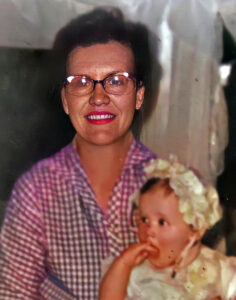
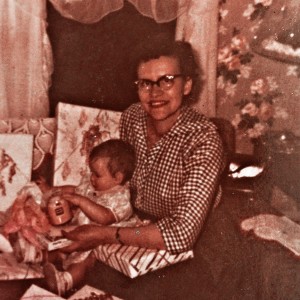 It’s not every day that someone turns 100 years old, but today, that can be said of my aunt, Doris Spencer. She is the last of my aunts and uncles on my dad’s side, and I’m sure it never occurred to her that she might achieve that grand age. Everyone marks the day they hit double digits, but very few people hit triple digits. Just imagine…living for a whole century. What changes she must have seen in all those years. In 1924, the life expectancy was 54.1 years. Of course, that was the average age that people were dying, not how long those born that year were expected to live. Still, Aunt Doris has far exceeded that number and is even beyond the current life expectancy, which is 73.33 years. The average income in 1924 was $2,196 a year, which made the cost of a new car ($265) and a house ($7,720) seem like a whole lot of money. A stamp cost 2 cents. Oh that we could have those pices with today’s income, but let’s face it, that isn’t even reasonable.
It’s not every day that someone turns 100 years old, but today, that can be said of my aunt, Doris Spencer. She is the last of my aunts and uncles on my dad’s side, and I’m sure it never occurred to her that she might achieve that grand age. Everyone marks the day they hit double digits, but very few people hit triple digits. Just imagine…living for a whole century. What changes she must have seen in all those years. In 1924, the life expectancy was 54.1 years. Of course, that was the average age that people were dying, not how long those born that year were expected to live. Still, Aunt Doris has far exceeded that number and is even beyond the current life expectancy, which is 73.33 years. The average income in 1924 was $2,196 a year, which made the cost of a new car ($265) and a house ($7,720) seem like a whole lot of money. A stamp cost 2 cents. Oh that we could have those pices with today’s income, but let’s face it, that isn’t even reasonable. 
At the time that Aunt Doris was born, Calvin Coolidge was President of the United States, and we had no vice-president from 1923 to 1925, that might seem odd, and in fact, it is unusual, but not unheard of. In fact, there were eighteen presidents who served all or part of their term with no vice-president, and four that served the whole term without a vice-president. Coolidge becme president when Warren Harding died suddenly in 1923. So he had no vice-president. He was re-elected in his own right in 1924, and could have run again in 1928, but chose not to. Of course, none of that made any difference to Aunt Doris, who was just a newborn then, but I’m sure she would find it interesting to note.
Aunt Doris and my Uncle Bill Spencer had three children, Pamela “Pam” (Spencer) Wendling in late 1954, William “Bill” Spencer Jr in 1959, and James “Jim” Spencer in 1962. She has also been blessed with five grandchildren, four great grandchildren and one bonus great granddaughter. She has had a happy life, and she 
 has always been a blessing to many people. She and my mom, Collene Spencer were best friends, and loved living across the yard from each other when my family lived in Superior, Wisconsin. When we moved to Casper, Wyoming, the friends really missed each other. I was so glad that my sister, Cheryl Masterson and I took Mom to Wisconsin to visit before she passed away in 2015. I know it meant so much to both of them. I am so glad we gave them that gift, and I’m so glad that my Aunt Doris has made it to triple digits. Today is Aunt Doris’ 100th birthday. Happy birthday Aunt Doris!! Have a wonderful day!! We love you!!
has always been a blessing to many people. She and my mom, Collene Spencer were best friends, and loved living across the yard from each other when my family lived in Superior, Wisconsin. When we moved to Casper, Wyoming, the friends really missed each other. I was so glad that my sister, Cheryl Masterson and I took Mom to Wisconsin to visit before she passed away in 2015. I know it meant so much to both of them. I am so glad we gave them that gift, and I’m so glad that my Aunt Doris has made it to triple digits. Today is Aunt Doris’ 100th birthday. Happy birthday Aunt Doris!! Have a wonderful day!! We love you!!
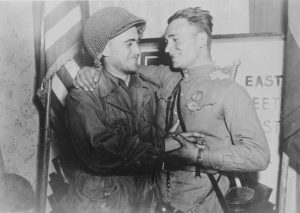 Sometimes, an event that potentially changed history, ends up getting little or no recognition. Thankfully, the picture that marked the event was taken, or the entire event might never have been noticed in history at all. This particular day is actually a very important day in the history of World War II, and therefore, the world. Elbe Day, which took place on April 25, 1945, is the day Soviet and American troops met at the Elbe River, near Torgau in Germany. This event marked an important step toward the end of World War II in Europe. If you have ever heard the saying, divide and conquer, you will know basically what happened on Elbe Day. A secret mission had been planned, and April 25, 1945, was the day it was carried out.
Sometimes, an event that potentially changed history, ends up getting little or no recognition. Thankfully, the picture that marked the event was taken, or the entire event might never have been noticed in history at all. This particular day is actually a very important day in the history of World War II, and therefore, the world. Elbe Day, which took place on April 25, 1945, is the day Soviet and American troops met at the Elbe River, near Torgau in Germany. This event marked an important step toward the end of World War II in Europe. If you have ever heard the saying, divide and conquer, you will know basically what happened on Elbe Day. A secret mission had been planned, and April 25, 1945, was the day it was carried out.
The plan was to have the Soviet army advance from the East, and the US Army advance from the West. The first contact between American and Soviet patrols occurred near Strehla exactly as planned, after First Lieutenant Albert Kotzebue, an American soldier, crossed the Elbe River in a boat with three men of an intelligence and reconnaissance platoon. Once they crossed to the east bank of the river, they met up with  forward elements of a Soviet Guards rifle regiment of the First Ukrainian Front, under the command of Lieutenant Colonel Alexander Gardiev. Later that day, another patrol under Second Lieutenant William Robertson with Frank Huff, James McDonnell and Paul Staub met a Soviet patrol commanded by Lieutenant Alexander Silvashko on the destroyed Elbe bridge of Torgau. When the two armies connected at the Elbe River, the cutting of Germany in half is accomplished. In doing so, the strength of the German army was severely weakened. The German army was split in two, just like the country was, and in the end, that split made it impossible for the Germans to really fight the war they were engaged in. It was the beginning of the end for them.
forward elements of a Soviet Guards rifle regiment of the First Ukrainian Front, under the command of Lieutenant Colonel Alexander Gardiev. Later that day, another patrol under Second Lieutenant William Robertson with Frank Huff, James McDonnell and Paul Staub met a Soviet patrol commanded by Lieutenant Alexander Silvashko on the destroyed Elbe bridge of Torgau. When the two armies connected at the Elbe River, the cutting of Germany in half is accomplished. In doing so, the strength of the German army was severely weakened. The German army was split in two, just like the country was, and in the end, that split made it impossible for the Germans to really fight the war they were engaged in. It was the beginning of the end for them.
Finally, on April 26, the commanders of the 69th Infantry Division of the First Army (United States) and the 58th Guards Rifle Division of the 5th Guards Army (Soviet Union) met at Torgau, southwest of Berlin. They knew that this moment was monumental, and it had to be documented. Arrangements were made for the 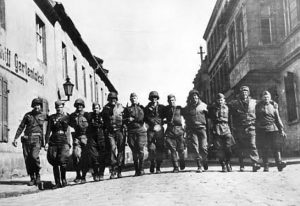 formal “Handshake of Torgau” photo to be taken of Robertson and Silvashko the following day, April 27. The Soviet, American, and British governments released simultaneous statements that evening in London, Moscow, and Washington, “reaffirming the determination of the three Allied powers to complete the destruction of the Third Reich.” They knew they must have victory at all costs.
formal “Handshake of Torgau” photo to be taken of Robertson and Silvashko the following day, April 27. The Soviet, American, and British governments released simultaneous statements that evening in London, Moscow, and Washington, “reaffirming the determination of the three Allied powers to complete the destruction of the Third Reich.” They knew they must have victory at all costs.
The fact that Elbe Day has never been an official holiday in any country, has not stopped people from looking to the day as something very special, and in the years after 1945 the memory of this friendly encounter gained new significance in the context of the Cold War between the United States and the Soviet Union.
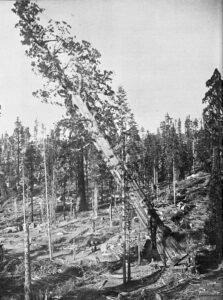
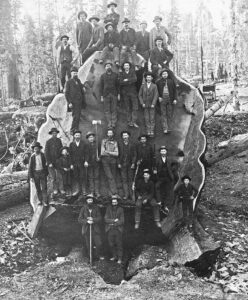 If you have ever wondered about the stupid things people can do, consider this. Most people have heard about the Redwoods in California. Trees just seem to grow much bigger in California, and if you have ever toured the Redwood National and State Parks, you will know what I mean. There is also a Sequoia National Park, and bordering that the Kings Canyon National Park, which was the location of the Mark Twain Tree…a giant sequoia tree located in the Big Stump Forest of Kings Canyon National Park. The giant tree was named after the American writer and humorist Mark Twain. The tree stood 331 feet tall and stretched 16 feet in diameter. It was an amazing tree, but there were people back East and in Europe who did not believe that trees could grow that big. In the late 1800s, travel across the country or from Europe just to see a big tree, was apparently not feasible. Now, I get that it could be difficult, and I get that the government wanted to prove that the tree existed, but what they did was no more than a display of stupidity.
If you have ever wondered about the stupid things people can do, consider this. Most people have heard about the Redwoods in California. Trees just seem to grow much bigger in California, and if you have ever toured the Redwood National and State Parks, you will know what I mean. There is also a Sequoia National Park, and bordering that the Kings Canyon National Park, which was the location of the Mark Twain Tree…a giant sequoia tree located in the Big Stump Forest of Kings Canyon National Park. The giant tree was named after the American writer and humorist Mark Twain. The tree stood 331 feet tall and stretched 16 feet in diameter. It was an amazing tree, but there were people back East and in Europe who did not believe that trees could grow that big. In the late 1800s, travel across the country or from Europe just to see a big tree, was apparently not feasible. Now, I get that it could be difficult, and I get that the government wanted to prove that the tree existed, but what they did was no more than a display of stupidity.
So, the solution was hatched. In 1891, the US Army arrived in California. Their mission was simple. Cut down 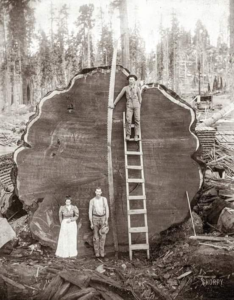 the famous Mark Twain tree so that slices of it could be sent to the American Museum of Natural History. In what is now Kings Canyon National Park, soldiers approached the giant sequoia tree and promptly cut it down. The tree, well known as it was, inspired wonder and doubt from those who had heard about it. Slices of the Mark Twain Tree were sent back to the East Coast and Europe, where it was displayed at museums in New York and London.
the famous Mark Twain tree so that slices of it could be sent to the American Museum of Natural History. In what is now Kings Canyon National Park, soldiers approached the giant sequoia tree and promptly cut it down. The tree, well known as it was, inspired wonder and doubt from those who had heard about it. Slices of the Mark Twain Tree were sent back to the East Coast and Europe, where it was displayed at museums in New York and London.
The project took 13 days and was carried out by lumbermen Bill Mills and SD Phips, with assistance from Barney and John Lukey. The tree was later shipped to the American Museum of Natural History in New York and the British Museum in London at the expense of Collis P Huntington, the president of the Southern Pacific Railroad. I suppose it is easy enough to understand why people couldn’t believe the huge trees were real. And for the Sequoia trees, even though the Sequoia National Park was established in 1890, access to the sequoia groves was difficult and the existence of such large trees was not widely believed at the time. I suppose some people might think that could justify the actions of the US Army and the US government, but to me it was a travesty, and a complete display of stupidity. So, to prove the tree could grow that big, they killed it, so they couldn’t see how big it could really grow. All to prove a point, 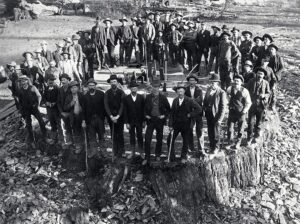
 because there were those who thought the story was bogus.
because there were those who thought the story was bogus.
Today, you can see the Mark Twain stump, and the other remains of the tree, which are preserved as part of the Big Stump Picnic Area in Kings Canyon National Park. The stump is near the entrance to Grant Grove. The stump stands there as a monument to the stupidity of some men.
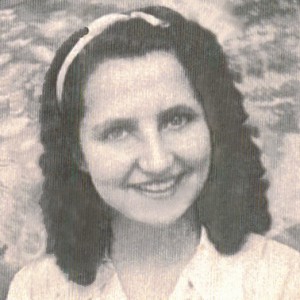
 My aunt, Deloris “Dee” Johnson was always such a cheerful, fun-loving person. My sisters and I loved when she would come over to visit our mom, her sister, Collene Spencer. I especially loved her laugh. It was infectious and contagious. Aunt Dee left us far too soon, when she contracted Brain Cancer. She was just 65 years old. That was a very sad time, because we would not see her beautiful, smiling face for a long time…until we see her again in Heaven. Aunt Dee loved life, and always looked forward to the next day, and the next adventure. She had a way of inventing fun, and everyone around her benefitted.
My aunt, Deloris “Dee” Johnson was always such a cheerful, fun-loving person. My sisters and I loved when she would come over to visit our mom, her sister, Collene Spencer. I especially loved her laugh. It was infectious and contagious. Aunt Dee left us far too soon, when she contracted Brain Cancer. She was just 65 years old. That was a very sad time, because we would not see her beautiful, smiling face for a long time…until we see her again in Heaven. Aunt Dee loved life, and always looked forward to the next day, and the next adventure. She had a way of inventing fun, and everyone around her benefitted.
When she was a kid, there were no video games, and while television was a thing, not everyone had one. Even if they did, kids did not spend hours watching television. Kids went and played outside. They played games like kick the can, hide and seek, blind man’s bluff, and many others, I’m sure. Basically, if it was daylight, and their chores were done, kids played outside. Aunt Dee one time got out a big trench coat and she and my mom, her sister, Collene Spencer, did a little “flying” in the wind. They had a blast. Aunt Dee once learned a new dance in school and upon her arrival home, immediately taught it to her siblings. I think she might have been a great schoolteacher. She loved kids and loved to teach things to others.
Aunt Dee was George and Hattie Byer’s, my grandparents, third child and third daughter. Later she would have 8 siblings, two brothers and six sisters. While Aunt Dee was very loving and kind, she did not take kindly to anyone picking on her family, and was known to tell a few people off, if they got on the wrong side of her. Nevertheless, for the most part, she was a quiet, sweet mannered person, and she was loved by all who knew her. She loved doing things for her family, like catching fish at the river, and putting them in a wading pool for the other kids 
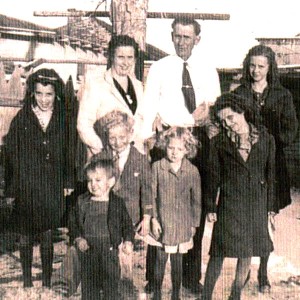 in the family to enjoy. She bought a piano for the family for $35.00, and it was in her mom’s house until her passing. Grandma really enjoyed that piano. She could actually play is a little. Her grandkids “played” it too, but I’m sure Grandma didn’t enjoy that very much at all. In fact, I’m sure that was considered more like “pounding” on it than actually playing it. It was probably pure torture. Whether Grandma love the noise or not, she did love the gift from her daughter. Today would have been my Aunt Dee’s 93rd birthday. Happy birthday in Heaven, Aunt Dee. We love and miss you very much.
in the family to enjoy. She bought a piano for the family for $35.00, and it was in her mom’s house until her passing. Grandma really enjoyed that piano. She could actually play is a little. Her grandkids “played” it too, but I’m sure Grandma didn’t enjoy that very much at all. In fact, I’m sure that was considered more like “pounding” on it than actually playing it. It was probably pure torture. Whether Grandma love the noise or not, she did love the gift from her daughter. Today would have been my Aunt Dee’s 93rd birthday. Happy birthday in Heaven, Aunt Dee. We love and miss you very much.
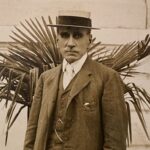
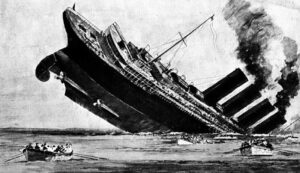 Born in Uruguay 1840, Ramon Artagaveytia was an Argentinian businessman. Even in 1840, businessmen had a need to travel periodically. That is why Artagaveytia found himself on board the ship America when it sank in December 1871. I’m sure the situation was absolutely terrifying, but Artagaveytia, became one of just 65 passengers to survive the disaster. He survived, only by jumping into the water and swimming to safety. I’m sure he felt very fortunate to survive his ordeal, but that is not to say that he was not traumatized. For years, Ramon Artagaveytia, was terrified of travel. Still, while he may have limited his travel, it was still essential at times.
Born in Uruguay 1840, Ramon Artagaveytia was an Argentinian businessman. Even in 1840, businessmen had a need to travel periodically. That is why Artagaveytia found himself on board the ship America when it sank in December 1871. I’m sure the situation was absolutely terrifying, but Artagaveytia, became one of just 65 passengers to survive the disaster. He survived, only by jumping into the water and swimming to safety. I’m sure he felt very fortunate to survive his ordeal, but that is not to say that he was not traumatized. For years, Ramon Artagaveytia, was terrified of travel. Still, while he may have limited his travel, it was still essential at times.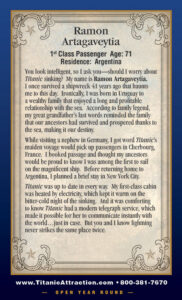
All that changed in 1912, when he wrote a letter to one of his cousins. In his letter, Artagaveytia, expressed relief, saying, “At last I will be able to travel, and, above all, I will be able to sleep calm. The sinking of the America was terrible!… Nightmares keep tormenting me. Even in the most quiet trips, I wake up in the middle of the night with terrible nightmares and always hearing the same fateful word: ‘Fire! Fire! Fire!’… I have even gotten to the point where I find myself standing in the deck with my lifebelt on….”
Artagaveytia was returning to the Americas, following a visit with his nephew in Berlin. As it turned out, the ship that finally put his mind at ease, was the “unsinkable” Titanic. When Artagaveytia arrived at Titanic, he was awed by its luxury. Everyone who saw Titanic was awed by its luxury. For Artagaveytia, one of Titanic’s greatest features was the fact that the ship had telegram capabilities. The promise of instant communication should a crisis arise, brought Artagaveytia great comfort.
Of course, as we all now know, Titanic would not be the ship that would make him safe. Titanic was simply not “unsinkable” because no ship is unsinkable. Titanic would hit that iceberg hiding in the darkness on April 14, 1912, and it would sink, in the early hours of April 15, 1912. Artagaveytia was reportedly seen on one of the decks of Titanic with two fellow passengers, looking as though he wasn’t concerned about the ship actually 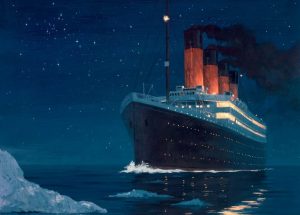
 sinking. He had accepted the story that so many people had believed…that somehow, this ship was “unsinkable.” Somehow, he and many others trusted the story above what should have been understood a known fact…that any ship can sink. This time, Artagaveytia would not escape. Artagaveytia’s body was found in the North Atlantic roughly one week after the ship sank to the bottom of the sea.
sinking. He had accepted the story that so many people had believed…that somehow, this ship was “unsinkable.” Somehow, he and many others trusted the story above what should have been understood a known fact…that any ship can sink. This time, Artagaveytia would not escape. Artagaveytia’s body was found in the North Atlantic roughly one week after the ship sank to the bottom of the sea.
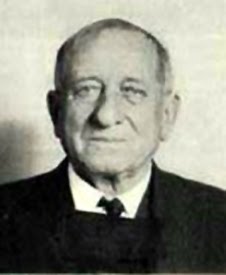
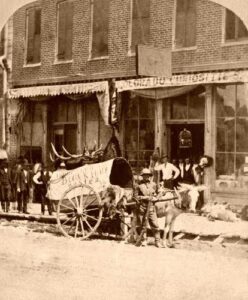 Louis H Blonger was born in Swanton, Vermont, on May 13, 1849. He was the eighth of 13 children. His father, Simon Peter Belonger, was a stonemason born in Canada of French ancestry. His mother, Judith Kennedy, was raised in an orphanage in Nenagh, County Tipperary, Ireland. The Belonger family migrated from Vermont to the lead mining village of Shullsburg, Wisconsin, when Lou was five years old. Sadly, his mother died in 1859, and Lou was sent to live with his older sister and her husband for a few years. It was around that time, that Blonger began using a shortened version of the family name (omitting the first “e”), as most of his brothers did.
Louis H Blonger was born in Swanton, Vermont, on May 13, 1849. He was the eighth of 13 children. His father, Simon Peter Belonger, was a stonemason born in Canada of French ancestry. His mother, Judith Kennedy, was raised in an orphanage in Nenagh, County Tipperary, Ireland. The Belonger family migrated from Vermont to the lead mining village of Shullsburg, Wisconsin, when Lou was five years old. Sadly, his mother died in 1859, and Lou was sent to live with his older sister and her husband for a few years. It was around that time, that Blonger began using a shortened version of the family name (omitting the first “e”), as most of his brothers did.
The Civil War broke out when Lou was just 15 years old. While he was technically just a boy, Lou enlisted in the Union Army anyway. While he was a soldier, someone must have known that he was quite young, and he soon found himself playing a musical instrument called a fife, helping to keep the marching pace of the soldiers. A Fifer was a common job for those boys who were too young to fight. When the war ended, Lou joined up with his older brother, Sam. The boys headed west hoping to make their fortunes in the many Colorado, Utah, and Nevada mining camps. As they were about to find out, mining isn’t the easiest way to make “your fortune” and so they found themselves moving from camp to camp, taking various jobs working in saloons and mines while doing a little prospecting, plenty of gambling, and practicing several con games in cities across the West, from Deadwood, South Dakota, to Silver City, New Mexico, and on to San Francisco, California. For a short time, Lou and Sam even served as lawmen in Albuquerque, New Mexico, where they were said to have provided protection for Doc Holliday and Wyatt Earp.
The brothers could be found in Denver, Colorado by the 1880s, where they ran a saloon on Larimer Street and later on Stout Street. Within ten years, they had become wealthy from their investments in mining claims, as well as their profits from their popular Denver saloons. Their saloons catered to gamblers and provided “painted ladies” for their customers, but it was far more due to their various games of fraud and graft practiced on many 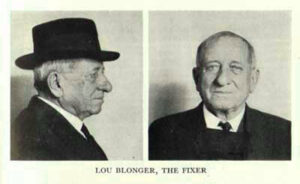 a hapless miner, that brought in the most money for the pair. While in Denver, they practiced their cons widely, in open competition with the well-known Soapy Smith Gang. Eventually, the Blonger brothers took over control as the “Kingpins” of the Denver underworld, when Soapy Smith moved on in 1896. They consolidated the city’s competing gangs of confidence men into a single organization.
a hapless miner, that brought in the most money for the pair. While in Denver, they practiced their cons widely, in open competition with the well-known Soapy Smith Gang. Eventually, the Blonger brothers took over control as the “Kingpins” of the Denver underworld, when Soapy Smith moved on in 1896. They consolidated the city’s competing gangs of confidence men into a single organization.
Operating their “business” as a “big store” con, or fake betting house, central facilities were established, complete with betting windows, chalkboards for race results, and ticker-tape machines. Here, the gang members would convince unsuspecting customers to put up large sums of cash to secure the delivery of promised stock profits or winning bets on horse races. It was this practice that is portrayed in the movie, The Sting. Lou also had several men working for him who profited as pickpockets, shell-game experts, and other small-time con games. Lou’s operation was so tight that no one could operate in the city without gaining his permission and “donating” a share of their proceeds to him. Not satisfied with their original influence, they began to wield their power by influencing elections and political appointments to protect their racket and shield their gang members from prosecution.
Blonger added a second-in-command, named Adolph W “Kid” Duff in 1904. Duff was an experienced hand, having long been a member of several other Colorado gangs and well known as a gambler, opium dealer, and pickpocket. With this addition, the profits of the “organization” increased, and by 1920, Lou Blonger had grown so powerful that many said he “owned” the city of Denver. He was said to be able to fix any arrest with a phone call and was making thousands of illegal dollars a year in his extensive confidence games. Lou even had a private telephone line in his office that ran directly to the chief of police…who was also corrupt. Lou had become known as “The Fixer” and had become one of the leaders of the longest-running confidence rings in the American West. Nevertheless, even this was a doomed enterprise.
Blonger had been a decent young man turned successful criminal for decades, when in 1922, it all ended. Di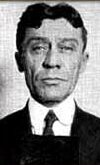
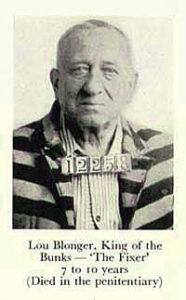 strict Attorney Philip S Van Cise circumvented the corrupt Denver politicians and established his own “secret force” of local citizens. They were funded by private donations, an Van Cise’s men were able to arrest 33 confidence men, including Louis Blonger and “Kid” Duff. The trial was big news and highly publicized. The people were tired of the corruption, and upon their conviction, Louis Blonger and many other gang members were sentenced to prison in Cañon City, Colorado. Lou Blonger and “Kid”, Duff received sentences of seven to ten years, nevertheless, Blonger would again escape hi “due punishment” when just five months after going to prison, he died on April 20, 1924, at the age of 74. Duff, in the meantime, was out on bond pending another court case, when he committed suicide. You might be wondering what Lou’s older brother Sam was doing at this time. Sam had died some ten years earlier.
strict Attorney Philip S Van Cise circumvented the corrupt Denver politicians and established his own “secret force” of local citizens. They were funded by private donations, an Van Cise’s men were able to arrest 33 confidence men, including Louis Blonger and “Kid” Duff. The trial was big news and highly publicized. The people were tired of the corruption, and upon their conviction, Louis Blonger and many other gang members were sentenced to prison in Cañon City, Colorado. Lou Blonger and “Kid”, Duff received sentences of seven to ten years, nevertheless, Blonger would again escape hi “due punishment” when just five months after going to prison, he died on April 20, 1924, at the age of 74. Duff, in the meantime, was out on bond pending another court case, when he committed suicide. You might be wondering what Lou’s older brother Sam was doing at this time. Sam had died some ten years earlier.
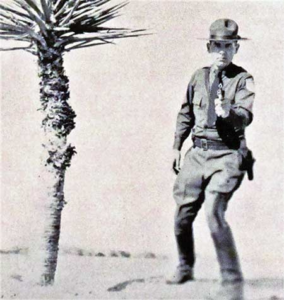 Charles Askins, Jr was an American lawman, US Army officer, and writer. He served in law enforcement, mostly with the US Forest Service and Border Patrol, in the American Southwest prior to the Second World War. He was also known as Colonel Charles “Boots” Askins. He was the son of Major Charles “Bobo” Askins, a sportswriter and Army officer who served in the Spanish American War and World War I, and he was quickly following in his father’s footsteps.
Charles Askins, Jr was an American lawman, US Army officer, and writer. He served in law enforcement, mostly with the US Forest Service and Border Patrol, in the American Southwest prior to the Second World War. He was also known as Colonel Charles “Boots” Askins. He was the son of Major Charles “Bobo” Askins, a sportswriter and Army officer who served in the Spanish American War and World War I, and he was quickly following in his father’s footsteps.
Askins was born in Nebraska on October 28, 1987. The family moved to Oklahoma, where “Boots” Askins was raised. He had several careers in his life, but the first job was fighting forest fires in Montana. Then in 1927, the US Forest Service transferred him to New Mexico to be a Park Ranger at the Kit Carson National Forest. Askins fought fires in New Mexico, until 1930, when he was recruited by the US Border Patrol. Askins wrote in his memoir Unrepentant Sinner, that he had been involved in at least one gunfight every week. I’m sure that work on the US border brought with it a common risk of gunfights. Askins showed great skill, and during his service in the Border Patrol, he won many pistol championships. He was promoted to leader of the Border Patrol’s handgun skills program.
When the United States entered World War II, Askins served in the US Army as a battlefield recovery officer. 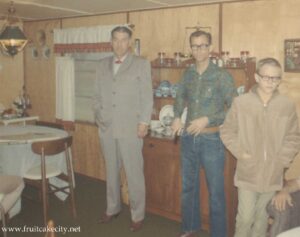 His work took him to North Africa, Italy, and he was in France on D-day. After being discharged from the Army following World War II, he spent several years in Spain as an attaché to the American embassy, helping Franco rebuild Spain’s munition plants. When he completed his assignment in Spain, he was reassigned to Vietnam, where he trained South Vietnamese soldiers in shooting and airborne operations. Askins had an exemplary career in the Army and while he was in the military, he indulged in big game hunting at every opportunity. He continued hunting after his retirement. In his lifetime, he held several big game hunting records, as well as two national pistol championships, an American Handgunner of the Year award, and innumerable smaller titles in competitive shooting. Askins spent his final years in the military at Fort Sam Houston, and he retired to San Antonio, Texas.
His work took him to North Africa, Italy, and he was in France on D-day. After being discharged from the Army following World War II, he spent several years in Spain as an attaché to the American embassy, helping Franco rebuild Spain’s munition plants. When he completed his assignment in Spain, he was reassigned to Vietnam, where he trained South Vietnamese soldiers in shooting and airborne operations. Askins had an exemplary career in the Army and while he was in the military, he indulged in big game hunting at every opportunity. He continued hunting after his retirement. In his lifetime, he held several big game hunting records, as well as two national pistol championships, an American Handgunner of the Year award, and innumerable smaller titles in competitive shooting. Askins spent his final years in the military at Fort Sam Houston, and he retired to San Antonio, Texas.
Askins inherited his writing skills from his father, “Bobo” Askins. “Boots” Askins was a creative writer, with a 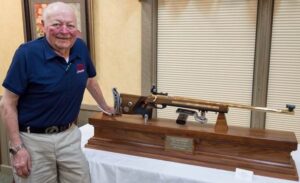 number of books and over 1,000 magazine articles on subjects related to hunting and shooting. His writing career spanned 70 years, from 1929 until his death in March of 1999. While he was an excellent, his writings were considered controversial, mostly because he liked to graphically describe the numerous fatal shootings in his law enforcement and military careers, stating he had killed “27, not counting blacks and Mexicans.” He even once described himself as possibly a “psychopathic killer, and that he hunted animals so avidly because he was not allowed to hunt men anymore.” I suppose his killings were “justified” but maybe not really ethical. Still, many of them were necessary. He died on March 2, 1999, at the age of 91.
number of books and over 1,000 magazine articles on subjects related to hunting and shooting. His writing career spanned 70 years, from 1929 until his death in March of 1999. While he was an excellent, his writings were considered controversial, mostly because he liked to graphically describe the numerous fatal shootings in his law enforcement and military careers, stating he had killed “27, not counting blacks and Mexicans.” He even once described himself as possibly a “psychopathic killer, and that he hunted animals so avidly because he was not allowed to hunt men anymore.” I suppose his killings were “justified” but maybe not really ethical. Still, many of them were necessary. He died on March 2, 1999, at the age of 91.

 Many advancements have been made in our world through the studies of science. Still, sometimes, scientists take their study of science just a little bit too far, in the name of science. There isn’t a person in the world who hasn’t heard of Albert Einstein. He was not only the iconic, but common to geniuses, Einstein was also eccentric. Nevertheless, he was a brilliant scientist, mathematician, and one of the most intelligent people in history. Because of his brilliance, Einstein also knew that upon his death, there would undoubtedly be some crazy scientist who would want to study his brain. I can’t imagine knowing that my brain would be in demand, and in fact might be stolen after I had died. That seems totally insane to me, but for Einstein, it was a very real possibility. Knowing that, Einstein left detailed instructions to cremate his body and not to allow any brain examinations.
Many advancements have been made in our world through the studies of science. Still, sometimes, scientists take their study of science just a little bit too far, in the name of science. There isn’t a person in the world who hasn’t heard of Albert Einstein. He was not only the iconic, but common to geniuses, Einstein was also eccentric. Nevertheless, he was a brilliant scientist, mathematician, and one of the most intelligent people in history. Because of his brilliance, Einstein also knew that upon his death, there would undoubtedly be some crazy scientist who would want to study his brain. I can’t imagine knowing that my brain would be in demand, and in fact might be stolen after I had died. That seems totally insane to me, but for Einstein, it was a very real possibility. Knowing that, Einstein left detailed instructions to cremate his body and not to allow any brain examinations.
As sometimes happens, even when a detailed and legal will is written, there are those who do not necessarily think that it needs to be followed. I think that is just heinous!! When Einstein died in 1955, a scientist named Thomas Stoltz Harvey conducted the autopsy. This man completely disregarded the will that was written by Albert Einstein, and despite the family not granting permission, he stole Einstein’s brain and took it to the University of Philadelphia to study it. When they found out about the theft, Einstein’s family decided to give  permission to Harvey to go ahead and study Einstein’s brain, as long as he published the finding in a scientific magazine. At that point they had few other options. Still, I believe it was a criminal act, and Harvey should have been punished to the fullest extent of the law.
permission to Harvey to go ahead and study Einstein’s brain, as long as he published the finding in a scientific magazine. At that point they had few other options. Still, I believe it was a criminal act, and Harvey should have been punished to the fullest extent of the law.
After, Harvey stole Einstein’s brain, “it was preserved, photographed, dissected, and even mailed to other scientists in hopes that studying it might uncover the source of his genius. Over decades, several interesting features of his brain have been discovered, including more extensive connections between the two hemispheres of his brain, a lighter than average weight, and an enlarged lateral sulcus. The part of his brain dedicated to mathematical and spatial thought, the inferior parietal lobe, was larger than average as well.” These days, you can view his brain (now with permission from his family)…or what is left of it after the mutilation it was subjected to, in the permanent exhibitions of the Mütter Museum in Philadelphia, Pennsylvania.
I don’t think “in the name of science” should be a license to steal something that belongs to someone else. Their body parts, whether needed for a transplant or for scientific study, should not be allowed. If a person wanted their body donated for science or transplant, they would have stated as much. I understand a family allowing a transplant if no specific instructions were given, but when specific instructions were given, as in the case of Albert Einstein, how dare someone decide that their desires are more important than the desires of the 
 deceased!! Once the damage was done, and the brain was stolen, Einstein’s family made the decision not to prosecute, but rather to allow the scientific testing. It was a gracious move on their part, and an act of mercy that was most certainly not earned by one Thomas Stoltz Harvey!! I also speculate that it could have opened the door for additional victims…allowed in the name of science. This was just wrong…in so many ways!!
deceased!! Once the damage was done, and the brain was stolen, Einstein’s family made the decision not to prosecute, but rather to allow the scientific testing. It was a gracious move on their part, and an act of mercy that was most certainly not earned by one Thomas Stoltz Harvey!! I also speculate that it could have opened the door for additional victims…allowed in the name of science. This was just wrong…in so many ways!!

 My sister-in-law, Jennifer Parmely’s partner, Brian Cratty is probably as close as I’ll ever know to a true mountain man. No, he doesn’t live alone in the wilderness, but he probably could. He loves the mountains, loves spending countless hours up at their cabin on Casper Mountain or riding the biking trails, or watching the animals that live and roam through their property. Brian is totally in his element on the mountain. I’m sure that his love of the outdoors is a big part of the attraction for Jennifer. She is a serious outdoor woman too. They always have similar goals and ideas too.
My sister-in-law, Jennifer Parmely’s partner, Brian Cratty is probably as close as I’ll ever know to a true mountain man. No, he doesn’t live alone in the wilderness, but he probably could. He loves the mountains, loves spending countless hours up at their cabin on Casper Mountain or riding the biking trails, or watching the animals that live and roam through their property. Brian is totally in his element on the mountain. I’m sure that his love of the outdoors is a big part of the attraction for Jennifer. She is a serious outdoor woman too. They always have similar goals and ideas too.
Brian is a very compassionate, kind, and loving. He can usually read a situation and knows very well what  needs to be done to comfort people. That was really one of the first things I saw in him, when my father-in-law (Jennifer’s dad) passed away. He was there for her…a quiet strength. It was much appreciated by all of us. We all felt his compassion. That was such a hard day, as were the days following the loss of our other parents, but that day stood out in my mind, because he just made us all feel…loved.
needs to be done to comfort people. That was really one of the first things I saw in him, when my father-in-law (Jennifer’s dad) passed away. He was there for her…a quiet strength. It was much appreciated by all of us. We all felt his compassion. That was such a hard day, as were the days following the loss of our other parents, but that day stood out in my mind, because he just made us all feel…loved.
Brian is a good man. He plays with Jennifer’s grandchildren, making them feel special. He is a wonderful grandpa to them. I’m not sure what the kids call Brian, but in keeping with the German word for Grandma (Oma), I would assume it might be Opa. It doesn’t really matter, because the kids love him, and they have a great time with him. Brian is a person who gets along well with just about anyone, and kids pick up on that stuff too.
Brian has been a pilot for most of his life. He was a helicopter pilot in the US Army, from October 1968 to April 
 1971. Then when he got out of the Army, he became a Life Flight pilot at Wyoming Medical Center (Banner Health) from October 1984 to December 2006. When he left Banner Health, he flew for Business Aviators, Inc from December 2006 to 2015, when he retired. These days, he is still a pilot, but a lot of his “flying” is done on a bicycle. Today is Briam’s birthday. Happy birthday Brian!! Have a great day!! We love you!!
1971. Then when he got out of the Army, he became a Life Flight pilot at Wyoming Medical Center (Banner Health) from October 1984 to December 2006. When he left Banner Health, he flew for Business Aviators, Inc from December 2006 to 2015, when he retired. These days, he is still a pilot, but a lot of his “flying” is done on a bicycle. Today is Briam’s birthday. Happy birthday Brian!! Have a great day!! We love you!!

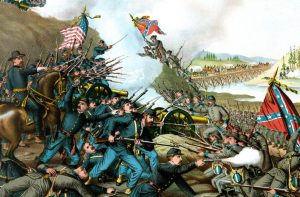 Most of us think that after the Civil War, the South simply accepted defeat and went on to become model citizens of the new America…the one without slavery. That was not the case, however. First of all, there were a number of plantation owners in the South, who just didn’t tell their slaves that they were free now. Finally, after being forced to do so, the announcement came, a whole two months after the effective conclusion of the Civil War, and even longer since Abraham Lincoln had first signed the Emancipation Proclamation. Nevertheless, even after that day, many enslaved black people in Texas still weren’t free. That part was bad enough, but that wasn’t all there was to it.
Most of us think that after the Civil War, the South simply accepted defeat and went on to become model citizens of the new America…the one without slavery. That was not the case, however. First of all, there were a number of plantation owners in the South, who just didn’t tell their slaves that they were free now. Finally, after being forced to do so, the announcement came, a whole two months after the effective conclusion of the Civil War, and even longer since Abraham Lincoln had first signed the Emancipation Proclamation. Nevertheless, even after that day, many enslaved black people in Texas still weren’t free. That part was bad enough, but that wasn’t all there was to it.
We have heard people say that if this or that president gets into office, they are leaving the country. People have also left the country because they didn’t want to fight is a war. However, I had never heard that  approximately 20,000 Confederates decided to actually leave the country. They went to Brazil after the Civil War to create a kingdom built on slavery. These people were so set on their lifestyle that they were willing to pull up stakes and start over in order to keep their slaves and their slavery lifestyle. The reality was that after four bloody years of war, the Confederacy virtually crumbled in April 1865. Nevertheless, a rather large group of the Confederates were not ready to accept defeat.
approximately 20,000 Confederates decided to actually leave the country. They went to Brazil after the Civil War to create a kingdom built on slavery. These people were so set on their lifestyle that they were willing to pull up stakes and start over in order to keep their slaves and their slavery lifestyle. The reality was that after four bloody years of war, the Confederacy virtually crumbled in April 1865. Nevertheless, a rather large group of the Confederates were not ready to accept defeat.
Instead, as many as 20,000 of them fled south. They relocated to Brazil, where a slaveholding culture already existed. There, they hoped the country’s culture could help them preserve their traditions. Once there, they cooked Southern food, spoke English, and tried to buy enough slaves to resurrect the pre-Civil War plantation system. These people, known as Confederados, were enticed to Brazil by offers of cheap land from Emperor Dom Pedro II, who had hoped to gain expertise in cotton farming. Initially, most of these so-called Confederados settled in the current state of São Paulo, where they founded the city of Americana, which was once part of the neighboring city of Santa Bárbara d’Oeste. The descendants of other Confederados would later be found throughout Brazil. They were very happy with their decision to leave the United States, and very 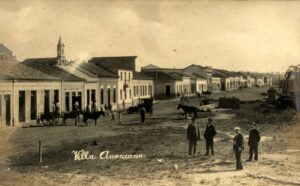
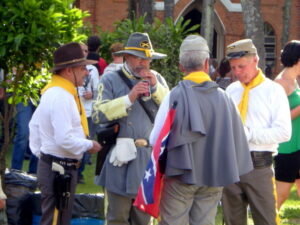 happy that they could continue to keep slaves. Nevertheless, their “victory” was not without loss too. They had to give up their citizenship in the United States, and I have to wonder if their lives have turned out as they hoped they would, or if they are living in much poorer conditions in Brazil. Nevertheless, they stayed, and to this day, the so-called Confederados gather each year to fly the Confederate flag and celebrate their lost heritage.
happy that they could continue to keep slaves. Nevertheless, their “victory” was not without loss too. They had to give up their citizenship in the United States, and I have to wonder if their lives have turned out as they hoped they would, or if they are living in much poorer conditions in Brazil. Nevertheless, they stayed, and to this day, the so-called Confederados gather each year to fly the Confederate flag and celebrate their lost heritage.

